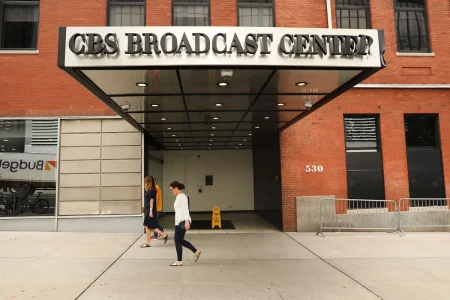The Rise of “RushTok”: How Sorority Rush Became a Social Media Phenomenon
College sorority recruitment season, once a relatively private tradition limited to campus life, has transformed into a global social media spectacle known as “RushTok.” Each August, TikTok feeds across the world become flooded with videos of potential sorority members showcasing their outfits, documenting their walks down sorority row, and sharing their daily experiences during the recruitment process. What began as documentation of a niche college ritual has evolved into a powerful cultural and economic force, with some videos garnering millions of views overnight and transforming ordinary college students into influential social media personalities before they’ve even received a bid to join a sorority. This phenomenon has created an unexpected pathway to internet fame and financial opportunity for young women who may have simply been following a longstanding college tradition.
For many participants like University of Alabama student Kylan Darnell, the attention comes as a complete surprise. “I myself am from the smallest town in Ohio, and I had no idea what sorority recruitment was until I went to Bama Bound,” Darnell explained during an appearance on “Fox & Friends Weekend.” She described how her interest in sorority life was sparked by encountering peers whose mothers had dreamed of them joining sororities, or who had personal aspirations of Greek life membership. Darnell’s decision to participate in rush and document her experience unexpectedly launched her into digital stardom, illustrating how quickly these seemingly ordinary campus moments can catapult students into the spotlight. The transformation from anonymous college student to recognized internet personality happens virtually overnight for some of these young women, creating both opportunities and challenges they never anticipated when deciding to rush.
The financial implications of this newfound fame can be substantial. A single viral clip from campus can quickly evolve into lucrative sponsorships, brand partnerships, and long-term influencer careers. The economics of influence vary widely across the industry – nano-influencers with fewer than 10,000 followers might earn $100-$200 for a single Instagram reel, while micro-influencers (10,000-100,000 followers) can command $200-$1,000 per post. Those who achieve mid-tier status can earn $1,500-$5,000 per collaboration, and macro-influencers with follower counts exceeding half a million can demand fees starting at $5,000. Nearly 21% of marketers allocate between $10,000 and $50,000 for influencer campaigns, though approximately half maintain budgets under $10,000 by partnering with nano- and micro-influencers who boast highly engaged audiences. This economic ecosystem has been demonstrated through examples like last year’s partnership between the beverage brand Poppi and an entire University of Austin sorority, or Darnell’s recent collaboration with clothing retailer H&M.
Behind the viral videos and seemingly effortless social media success lies significant investment and preparation. Parents often spend heavily to position their daughters for success during rush, with some investing close to $10,000 on wardrobes, accessories, and even professional coaches who charge thousands of dollars to prepare students for the interview process. These preparations reflect the high stakes of sorority recruitment, where appearance, presentation, and social skills are heavily scrutinized. The intensive nature of the process is captured in Darnell’s description: “You’ve got these girls who are dressing up, going into sorority houses from 8 a.m. until 6 p.m. It’s so hard to wrap your mind around.” What viewers see in carefully edited TikTok clips represents only a fraction of the exhausting multi-day experience that recruitment entails, with participants moving between houses, participating in interviews, and navigating complex social dynamics in hopes of receiving bids from their preferred sororities.
The pressure associated with both traditional recruitment and its modern social media dimension can take a toll on participants’ mental health. Los Angeles psychologist Seth Meyers has cautioned that excessive pressure can be counterproductive, potentially exacerbating anxiety during what is already a stressful experience. “The experience of rushing – while exciting – temporarily adds to their stress,” he noted. The impact of this pressure is evident in cases like Darnell’s, who announced a brief mental health break from social media at the end of August despite her success. The dual demands of navigating the intense sorority recruitment process while simultaneously managing a rapidly growing social media presence can create an overwhelming burden for young women who may be experiencing their first time away from home at college. The scrutiny from both potential sorority sisters and a global online audience represents a unique modern pressure that previous generations of college students never faced.
Despite these challenges, “RushTok” shows no signs of slowing down as long as viewers remain engaged with the content. What began as a stressful college tradition has evolved into a launching pad for the next generation of online influencers, creating a symbiotic relationship between sorority culture and social media fame. The phenomenon represents a fascinating intersection of tradition and technology, where longstanding institutional practices have been transformed by the democratizing power of social platforms. For participants, the experience offers both tremendous opportunities and significant challenges as they navigate their college experiences under the watchful eye of millions. As another recruitment season concludes and a new cohort of members joins Greek organizations across American campuses, the influence of “RushTok” continues to reshape both sorority culture and the broader influencer economy, creating new pathways to prominence for young women entering college.














